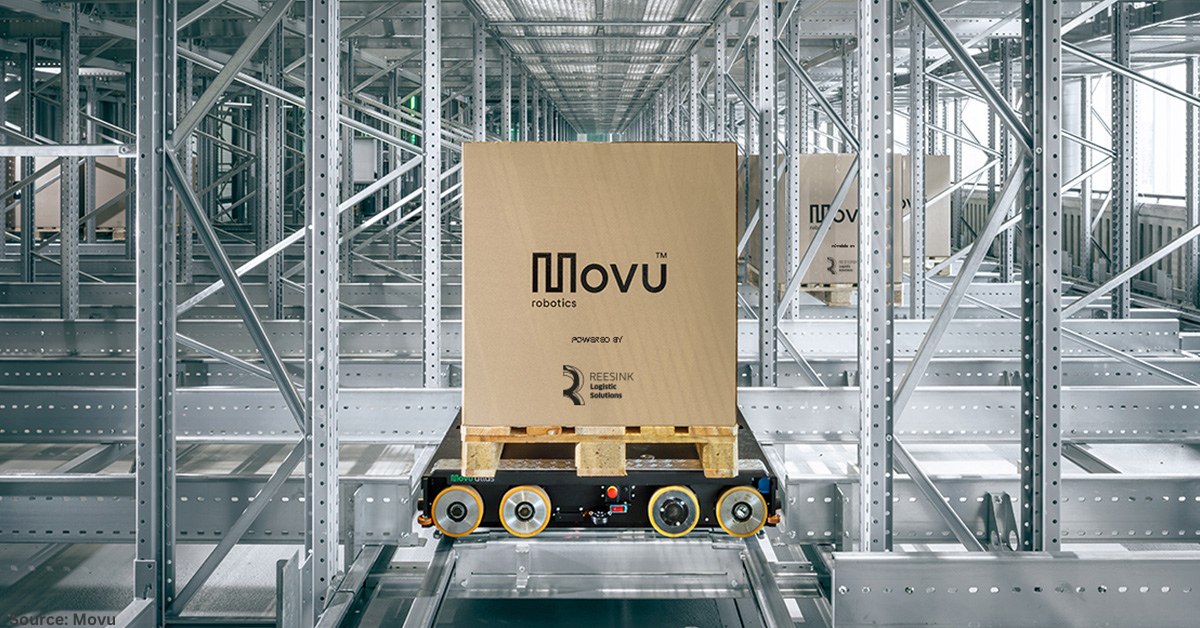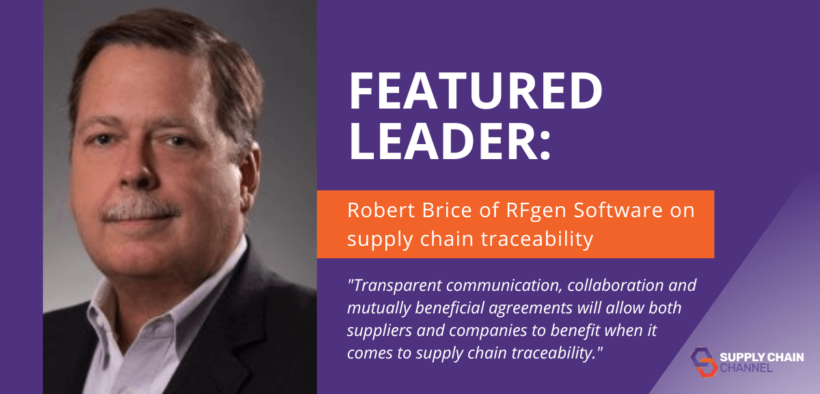Today, businesses face increased pressure to ensure traceability in their supply chains, especially as more consumers demand more information on the products they buy. With supply chain traceability, businesses can collect and analyze data at every stage of the supply chain to ensure that products are made safely, ethically and sustainably, increasing consumer loyalty and trust.
Robert Brice is the Co-Founder, President, and Chief Technology Officer of RFgen Software, a strategic partner for mobile barcoding solutions to help enterprise companies manage their inventories and reduce costs with real-time data integrated directly with major ERP operations systems.
Rob has played a key role in establishing the RFgen partner network in over 35 countries around the world and ensures that all RFgen customers consistently receive the “white glove concierge” service that has helped to build the company’s reputation.
In this article, Robert discusses the role that supply chain traceability plays in enhancing consumer trust and brand reputation.
Q: In what ways can companies benefit from leveraging supply chain traceability?
A: The benefits of implementing supply chain traceability include: greater visibility into the supply chain, improved risk management, enhanced sustainability efforts, reduced waste, increased efficiency and enhanced customer trust and brand reputation. A great real-world example can be seen in our work with Blue Bell Creameries, who before working with us, had issues with maintaining compliance, unreliable connectivity and asset tracking errors and delays. By implementing mobile barcoding technology, Blue Bell Creameries increased productivity and improved data accuracy with handhelds used for cycle counts, eliminated data drops with offline data collection capability and significantly enhanced fixed asset tracking.
Q: What are some of the challenges that companies typically face when implementing supply chain traceability and how do they overcome them?
A: Problems occur when there is a gap between what the C-Suite thinks operations do and what is actually happening on the production floor during vendor selection. This can lead to serious product workflow gaps where what was delivered doesn’t fit the actual need. A rigidly designed product that fails to remove system complexity, match the desired process workflow, or combine multiple operations only exacerbates the problem.
Additionally, failure to account for areas where wireless or cellular coverage is not available or is spotty can cause data loss, wasted time, and lead to user frustration, especially if the solution wasn’t designed to support offline capabilities.
Finally, responsiveness of the system is critical to ensure workers aren’t waiting on the system to perform their next task. This is crucial to user adoption failure. All of these items can be resolved by ensuring the provider engages with the intended users to ensure operational requirements are correct, the solution is architecture is flexible enough to handle the environment, and that you’re using a proven solution that has successfully integrated into your system of record, delivering the transaction responsiveness–even at volume.
Q: How can companies ensure that all of their suppliers are fully committed to supply chain traceability?
A: Companies need to establish good relationships with their suppliers and make themselves available for assistance because the supply chain only functions when every member of the “chain” has a good working relationship. Transparent communication, collaboration and mutually beneficial agreements will allow both suppliers and companies to benefit when it comes to supply chain traceability and also strengthens this relationship.
Another helpful tip is for companies to check in with suppliers and regularly assess their performance as this feedback will help them improve and encourage these suppliers to continue working with them.
Q: What are some of the key components of a robust supply chain traceability program?
A: Some of the key components of a robust supply chain traceability program include raw material tracking, production tracking, distribution tracking and consumer tracking. Also, we can’t forget about the reverse supply chain to enable the circular economy. The best way to implement all components is through collecting and analyzing data at each stage of the supply chain through various technologies like barcodes and RFID tags.
Q: As the CTO of RFgen, what are the tips that you would give to organizations that are looking to incorporate supply chain traceability into their operations?
A: Organizations should track supply chain metrics from the field to the warehouse floor, and more specifically, should consider the following measurements for tracking supply chain materials to generate better analytics: inventory, percentage of electronic data capture, granular metrics for high-cost supplies, costs of procedures and standard product identifiers.
The second tip would be to implement mobile technologies, like mobile barcoding, to instantly capture data at point-of-transaction creating a reliable continuous digital record of the chain of custody protecting your supply chain from false or lost inputs, facilitating regulatory compliance, and de-risking your operations from both a product and brand perspective.



















































Follow us on social media